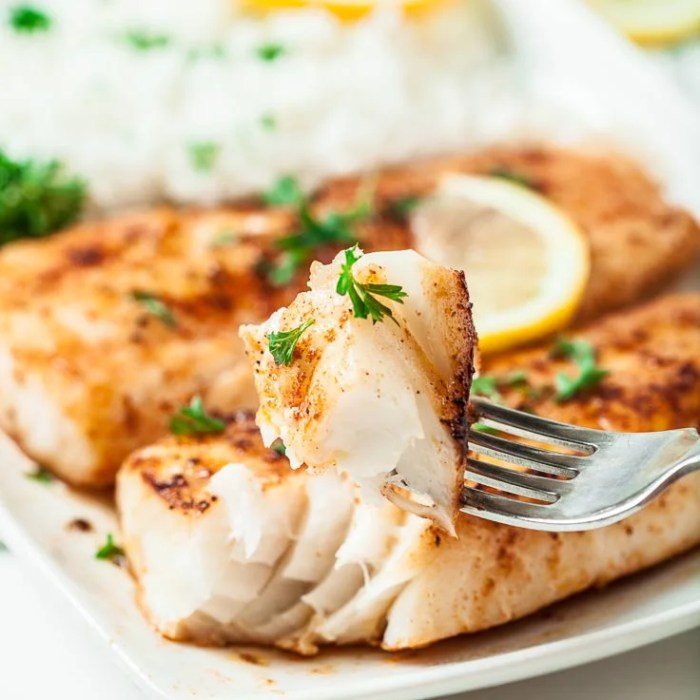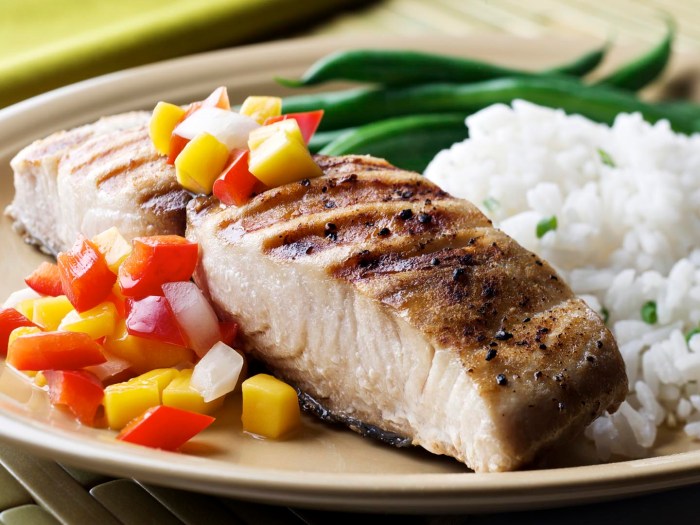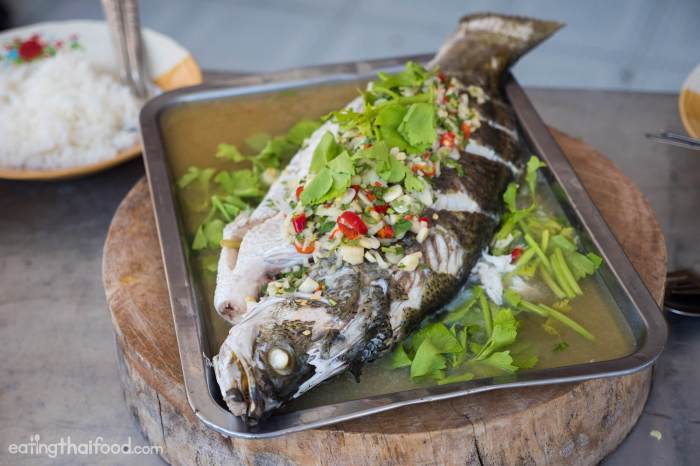Fish food recipe is a topic that captivates aquarium enthusiasts, providing a deeper understanding of the nutritional needs of our aquatic companions. Crafting a balanced diet for your fish is crucial for their well-being, ensuring they thrive in their underwater environment.
This guide explores the fundamental principles of fish nutrition, delving into the essential nutrients required for optimal health and growth. From understanding the ingredients found in commercial fish foods to creating your own homemade recipes, we’ll cover a comprehensive range of topics.
Whether you’re a seasoned aquarist or just starting your journey, this guide will equip you with the knowledge to provide your fish with the best possible nutrition.
Understanding Fish Nutrition

Just like humans, fish require a balanced diet to thrive. Providing the right nutrients is essential for their growth, development, and overall health. This section delves into the key nutrients that fish need, explaining their roles in maintaining fish well-being.
Essential Nutrients for Fish
Fish, like all living organisms, require specific nutrients for optimal growth and survival. These essential nutrients can be broadly categorized into five main groups: proteins, fats, carbohydrates, vitamins, and minerals.
- Proteins:Proteins are the building blocks of fish, crucial for growth, tissue repair, and the production of enzymes and hormones. They are composed of amino acids, which are essential for muscle development, immune function, and overall health. Fish require a variety of amino acids in their diet, with some being considered “essential” because they cannot be synthesized by the fish’s body and must be obtained from their food.
- Fats:Fats are a concentrated source of energy and play a vital role in various bodily functions. They are essential for cell membrane structure, hormone production, and the absorption of fat-soluble vitamins. Fish need a balance of different types of fats, including saturated, monounsaturated, and polyunsaturated fats, to ensure their health and well-being.
- Carbohydrates:While not as essential as proteins and fats, carbohydrates are still important energy sources for fish. They can be readily converted into glucose, which is the primary fuel source for many bodily functions. However, fish typically derive most of their energy from proteins and fats.
- Vitamins:Vitamins are organic compounds that are essential in small amounts for various metabolic processes. They play vital roles in vision, growth, immune function, and overall health. There are many different types of vitamins, each with a specific function. Fish require a balanced intake of all essential vitamins to maintain their well-being.
- Minerals:Minerals are inorganic substances that are essential for various bodily functions. They play roles in bone formation, nerve function, muscle contraction, and maintaining fluid balance. Like vitamins, fish need a balanced intake of essential minerals to maintain their health and well-being.
Nutritional Needs of Different Fish Species
The specific nutritional needs of fish vary greatly depending on their species, life stage, and environmental conditions. For example, carnivorous fish like salmon require a diet high in protein and fat, while herbivorous fish like goldfish rely more on carbohydrates and plant-based nutrients.
- Salmon:As a carnivorous fish, salmon requires a diet rich in protein and fat. They need a high percentage of animal-based protein, around 40-50%, and a significant amount of omega-3 fatty acids, which are essential for their health and development.
Get the entire information you require about creami recipes on this page.
- Goldfish:Goldfish are primarily herbivorous and rely on plant-based foods. Their diet should consist of a high percentage of carbohydrates, along with a moderate amount of protein and fat. They also need a balanced intake of vitamins and minerals.
- Betta Fish:Betta fish are omnivores and require a balanced diet of both animal and plant-based foods. They need a moderate amount of protein, along with a variety of vitamins and minerals.
Basic Fish Food Ingredients: Fish Food Recipe
Commercial fish food is formulated using a variety of ingredients to provide the necessary nutrients for fish growth and health. These ingredients can be broadly categorized into four main groups: fish meal, meat by-products, plant-based proteins, and grains.
Fish Meal
Fish meal is a highly digestible and nutritious protein source derived from processing fish by-products, such as heads, tails, and bones. It is rich in essential amino acids, including lysine, methionine, and arginine, which are crucial for muscle growth and overall health.
Additionally, fish meal contains high levels of omega-3 fatty acids, which are beneficial for fish immune system, skin health, and reproduction. However, fish meal production can have environmental impacts, including overfishing and habitat destruction.
Meat By-Products
Meat by-products, such as poultry by-products and meat meal, are often included in fish food as a source of protein and other nutrients. These ingredients are typically less expensive than fish meal but may have lower digestibility and nutritional value.
Meat by-products can also contain high levels of fat, which can lead to obesity in fish if not properly balanced in the diet.
Plant-Based Proteins
Plant-based proteins, such as soy protein concentrate, pea protein, and algae, are increasingly being used in fish food as a sustainable alternative to fish meal. These ingredients are typically more environmentally friendly than animal-based proteins and can provide a good source of essential amino acids.
However, some plant-based proteins may have lower digestibility than fish meal and may not provide all the necessary nutrients for fish.
Grains
Grains, such as corn, wheat, and rice, are often included in fish food as a source of carbohydrates and energy. They can also provide some essential nutrients, such as vitamins and minerals. However, grains can be difficult for some fish to digest and may not be as nutritious as other ingredients.
Ingredient Comparison Table
| Ingredient | Protein (%) | Fat (%) | Fiber (%) |
|---|---|---|---|
| Fish Meal | 60-70 | 10-15 | 5-10 |
| Meat By-products | 40-60 | 15-25 | 2-5 |
| Soy Protein Concentrate | 70-80 | 5-10 | 2-5 |
| Pea Protein | 70-80 | 5-10 | 2-5 |
| Corn | 10-12 | 4-6 | 2-4 |
| Wheat | 10-14 | 2-4 | 2-4 |
DIY Fish Food Recipes
Now that you understand the basics of fish nutrition and the ingredients that make up a healthy diet, let’s explore how to create your own fish food at home. Homemade fish food offers several benefits, including control over ingredients, freshness, and cost-effectiveness.
Basic Fish Food Recipe
This basic recipe provides a foundation for a balanced diet for most omnivorous fish. You can adjust the proportions and ingredients based on the specific needs of your fish. Ingredients:* 1 cup finely ground flake food (a good quality flake food provides a balanced nutrient profile)
- 1/2 cup finely ground spinach (rich in vitamins and minerals)
- 1/4 cup finely ground spirulina (a source of protein and essential nutrients)
- 1/4 cup finely ground dried shrimp (a source of protein and chitin)
- 1 tablespoon finely ground wheat germ (a source of vitamin E and other nutrients)
- 1 tablespoon finely ground flaxseed (a source of omega-3 fatty acids)
- 1 teaspoon finely ground garlic powder (a natural antibiotic and immune booster)
Instructions:
- Combine all ingredients in a blender or food processor until finely ground.
- Add a few drops of water to bind the ingredients together, forming a paste.
- Spread the paste on a baking sheet lined with parchment paper and dry in a low oven (170°F) for 1-2 hours, or until completely dry and crumbly.
- Once cooled, store the dried fish food in an airtight container in a cool, dry place.
Variations for Different Fish Species
You can adjust the basic recipe to suit the dietary needs of specific fish species. For example:* Carnivorous fish:Increase the proportion of dried shrimp and add finely ground meat (chicken, beef, or fish) to the recipe.
Herbivorous fish
Increase the proportion of spinach and spirulina and add finely ground algae (like nori or kelp).
Omnivorous fish
The basic recipe is suitable for most omnivorous fish. You can adjust the proportions of ingredients based on your fish’s preferences.
Preparing and Storing Homemade Fish Food
Here are some tips for preparing and storing your homemade fish food to ensure freshness and quality:* Use fresh ingredients:Ensure all ingredients are fresh and free of mold or spoilage.
Grind ingredients finely
Grinding the ingredients finely helps ensure that the fish can easily digest them.
Dry thoroughly
Drying the food thoroughly helps prevent mold and spoilage.
Store in an airtight container
Store the dried food in an airtight container to prevent moisture absorption and maintain freshness.
Use within a few weeks
Homemade fish food is best used within a few weeks for optimal freshness and nutrient content.
Remember: It’s always a good idea to introduce new foods gradually to your fish to avoid digestive upset. Start by offering a small amount of homemade food and gradually increase the amount over a few days.
Considerations for Different Fish Species

While the basic principles of fish nutrition apply across species, specific dietary needs vary significantly based on factors like feeding habits, habitat, and evolutionary adaptations. Understanding these differences is crucial for providing your fish with the right nutrients to thrive.
Dietary Needs of Different Fish Species
Fish species can be broadly categorized into herbivores, carnivores, and omnivores, each requiring specific dietary components.
- Herbivores: These fish primarily feed on plant matter, such as algae, aquatic plants, and phytoplankton. Examples include goldfish, silver dollars, and plecos. Their diet should be rich in fiber, vitamins, and minerals, with limited protein.
- Carnivores: These fish rely on animal protein for sustenance, consuming insects, worms, crustaceans, and other fish. Examples include cichlids, barbs, and angelfish. Their diet should be high in protein, fat, and essential amino acids.
- Omnivores: These fish have a more flexible diet, consuming both plant and animal matter. Examples include tetras, guppies, and catfish. Their diet should be balanced, containing both protein and plant-based components.
Specialized Feeders
Some fish species have specialized feeding habits that require specific dietary adjustments. These include:
- Plankton feeders: Fish like guppies and danios rely on microscopic organisms like plankton for food. They need a diet rich in small, easily digestible particles.
- Bottom feeders: Species like plecos and Corydoras catfish forage for food on the substrate. They require a diet that includes sinking pellets or flakes to reach the bottom of the tank.
- Insectivores: Fish like Bettas and Siamese fighting fish primarily feed on insects. Their diet should include live or frozen insects, along with appropriate commercial foods.
Freshwater vs. Saltwater Fish
Freshwater and saltwater fish have distinct nutritional requirements due to differences in their environments and evolutionary adaptations.
- Freshwater fish: Generally require lower levels of salt and higher levels of calcium in their diet. They also need to maintain proper electrolyte balance, which can be achieved through appropriate food choices.
- Saltwater fish: Need higher levels of salt and iodine in their diet to maintain osmotic balance. Their diet should also include essential minerals like magnesium, potassium, and calcium.
Recommended Diet and Feeding Frequency
The following table Artikels the recommended diet and feeding frequency for popular aquarium fish species. It’s important to note that these are general guidelines, and specific needs may vary based on individual fish size, activity level, and water parameters.
| Fish Species | Recommended Diet | Feeding Frequency |
|---|---|---|
| Goldfish | Flakes, pellets, algae wafers | 1-2 times per day |
| Betta Fish | Flakes, pellets, live or frozen insects | 1-2 times per day |
| Angelfish | Flakes, pellets, live or frozen brine shrimp | 2-3 times per day |
| Guppies | Flakes, pellets, live or frozen brine shrimp | 2-3 times per day |
| Cichlids | Flakes, pellets, live or frozen foods | 2-3 times per day |
| Plecos | Algae wafers, sinking pellets | 1-2 times per day |
| Corydoras Catfish | Sinking pellets, live or frozen bloodworms | 1-2 times per day |
Feeding Techniques and Frequency

Feeding your fish properly is crucial for their health and well-being. It’s not just about providing the right food but also about how much and how often you feed them. Overfeeding can lead to water pollution, while underfeeding can result in malnutrition.
Feeding Techniques
Proper feeding techniques are essential to ensure your fish receive the optimal amount of food and avoid overfeeding.
- Portion Control:Always feed your fish only as much as they can consume within a few minutes. A good rule of thumb is to feed them an amount that’s roughly the size of their eye. Overfeeding can lead to water pollution and health problems.
- Feeding Times:Establish a consistent feeding schedule. This helps your fish anticipate meals and regulate their digestive system. Feeding once or twice a day is usually sufficient for most fish.
- Observation:Pay attention to your fish’s behavior after feeding. If they are still hungry, you can provide a small additional portion. However, if they leave food uneaten, you may be overfeeding.
Feeding Frequency
The frequency of feeding depends on several factors, including the fish’s size, species, and activity level.
- Fish Size:Smaller fish typically require more frequent feedings than larger fish. This is because they have higher metabolic rates and need to eat more often to maintain their energy levels.
- Species:Different fish species have different dietary needs. Some fish, like goldfish, are omnivores and can eat a variety of foods. Others, like cichlids, are carnivores and require a diet primarily consisting of meat.
- Activity Level:Active fish, like those that swim constantly, require more food than less active fish. This is because they burn more calories and need to replenish their energy stores.
Overfeeding and Underfeeding, Fish food recipe
Overfeeding and underfeeding can both have negative consequences for your fish.
- Overfeeding:Overfeeding can lead to water pollution as uneaten food decomposes and releases harmful toxins. This can also cause obesity, digestive problems, and increased susceptibility to disease.
- Underfeeding:Underfeeding can lead to malnutrition, stunted growth, and weakened immune systems. This can make your fish more vulnerable to disease and stress.
It’s important to find the right balance between overfeeding and underfeeding. Observe your fish’s behavior and adjust their feeding schedule as needed.
Fish Food Supplements
Just as humans benefit from taking vitamins and minerals, certain fish can also benefit from supplemental nutrition. Fish food supplements can address dietary gaps and enhance the overall health and well-being of your aquatic companions.
Common Fish Food Supplements
Fish food supplements are available in various forms, including powders, flakes, and liquid solutions. Here are some common types and their purposes:
- Vitamins: Vitamins are essential organic compounds that play a crucial role in various bodily functions, such as growth, metabolism, and immune system support. Common vitamins added to fish food include vitamin A, vitamin D3, vitamin E, and vitamin C.
- Minerals: Minerals are inorganic elements that are equally vital for fish health. They contribute to bone and tissue development, electrolyte balance, and enzyme activity. Some common minerals included in fish food supplements are calcium, phosphorus, magnesium, and iodine.
- Probiotics: Probiotics are live microorganisms that, when consumed in adequate amounts, provide health benefits to the host. In fish, probiotics can improve gut health, enhance digestion, and strengthen the immune system.
- Color Enhancers: Certain fish food supplements contain pigments that can enhance the coloration of fish. These pigments are often derived from natural sources, such as algae and crustaceans.
Benefits and Risks of Fish Food Supplements
Fish food supplements can offer several potential benefits, but it’s essential to consider the potential risks as well.
Benefits
- Improved Nutrition: Supplements can address dietary deficiencies, ensuring fish receive the necessary nutrients for optimal growth, health, and reproduction.
- Enhanced Coloration: Color enhancers can contribute to the vibrant colors of certain fish species.
- Improved Immune System: Probiotics can boost the immune system, making fish more resistant to diseases.
Risks
- Overfeeding: Excessive supplementation can lead to overfeeding, causing water quality issues and health problems.
- Nutrient Imbalance: Improper supplementation can disrupt the balance of nutrients in the fish’s diet, leading to deficiencies or toxicities.
- Allergic Reactions: Some fish may be allergic to certain ingredients in supplements.
Selecting and Administering Fish Food Supplements
Choosing the right supplements and administering them correctly is crucial for maximizing benefits and minimizing risks.
- Consult with an Expert: Seek advice from a veterinarian or experienced aquarist regarding the appropriate supplements for your specific fish species.
- Read Labels Carefully: Pay attention to the ingredients, dosage recommendations, and potential side effects.
- Start Slowly: Introduce supplements gradually to allow the fish to adjust.
- Monitor Fish Health: Observe your fish for any changes in behavior, appetite, or appearance. If you notice any adverse effects, discontinue the supplement and consult with a professional.
Sustainable Fish Food Choices

As passionate fish keepers, we strive to provide the best care for our aquatic companions. However, it’s crucial to consider the environmental impact of the fish food we choose. While convenient, commercially produced fish food can have unintended consequences for our planet.
Environmental Impact of Commercial Fish Food Production
The production of commercial fish food contributes to environmental concerns, including resource depletion and pollution. Here’s a breakdown of the key issues:
- Overfishing:Many fish foods contain fishmeal and fish oil derived from wild-caught fish. The demand for these ingredients can lead to overfishing, depleting fish populations and disrupting marine ecosystems.
- Pollution:The manufacturing process of fish food can generate wastewater and air emissions, potentially polluting surrounding water bodies and the atmosphere.
- Resource Depletion:Fish food production requires significant amounts of water, energy, and land resources, contributing to the overall strain on our planet’s resources.
Sustainable Fish Food Options
Fortunately, there are several sustainable fish food alternatives that minimize environmental impact while providing nutritional value for your fish. These options often utilize responsibly sourced ingredients and employ eco-friendly production methods.
- Plant-Based Fish Foods:These options rely on plant-based ingredients like algae, peas, and lentils, reducing the reliance on fishmeal and minimizing the pressure on wild fish populations.
- Insect-Based Fish Foods:Insects are a sustainable protein source with a lower environmental footprint compared to traditional animal-based ingredients.
Insect-based fish foods are becoming increasingly popular, offering a more ethical and environmentally conscious alternative.
- Responsibly Sourced Fishmeal and Fish Oil:Some fish food manufacturers source their fishmeal and fish oil from sustainable fisheries certified by organizations like the Marine Stewardship Council (MSC). This ensures the ingredients are harvested responsibly and contribute to the health of marine ecosystems.
- Locally Produced Fish Food:Supporting local fish food producers can reduce transportation emissions and promote sustainable practices within your community.
Responsible Fish Food Choices
Making informed decisions about your fish food can have a positive impact on the environment. Here are some tips for choosing sustainable options:
- Read Labels Carefully:Pay attention to the ingredients list and look for certifications like MSC for responsibly sourced fishmeal and fish oil.
- Consider Plant-Based or Insect-Based Options:Explore alternative protein sources that minimize environmental impact.
- Support Sustainable Brands:Choose fish food brands that prioritize sustainable practices and transparent sourcing.
- Reduce Waste:Only purchase the amount of fish food your fish will consume to minimize waste and prevent unnecessary production.
Last Word
By understanding the nutritional needs of your fish and adopting responsible feeding practices, you can create a thriving aquarium ecosystem. From selecting high-quality ingredients to incorporating supplements, every step contributes to the overall health and longevity of your aquatic pets.
Remember, a balanced diet is the foundation for a vibrant and happy underwater world.
